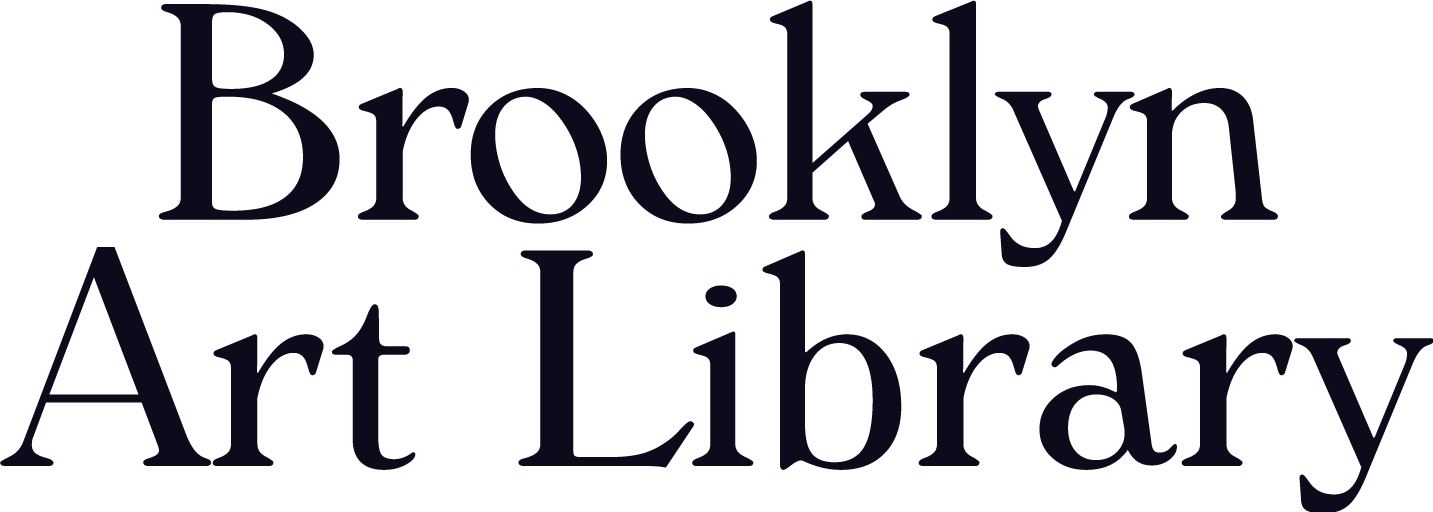Beyond the Page: Hanna Washburn
Beyond the Page is a new interview series featuring outside work made by artists in the Sketchbook Project collection. The first artist of the series is Hudson Valley based sculptor Hanna Washburn. Hanna’s sketchbook can be viewed here in the digital library: https://sketchbookproject.com/library/19285
Read on below to learn about Hanna’s practice and the thoughts and processes that go into creating her vibrant, playful forms and exhibitions.
How were you first introduced to art? When did you start making soft sculptures?
I have always been interested in making things. I think about knitting with my grandmother on her front porch, making friendship bracelets in the summer, and arranging elaborate ‘set ups’ with my toys, household items, and treasures from the recycling bin. I studied art in college, but it wasn’t until grad school that I really started to follow these threads back to my childhood interests, and my childhood home. Fabric felt like a natural way to weave all these elements together, and I began using my own clothing to talk about this kind of material memory. My visual language has expanded since then, but that is where it began.
When did you participate in the sketchbook project? What was this process like for you?
My partner gifted me the sketchbook project in 2017. After working sculpturally for the last few years, I was a little nervous to fill it out! I typically carry around a sketchbook to jot down ideas and loose preparatory drawings for my sculptures, but I do not usually share them. This project was out of my comfort zone, but it was a really important exercise for me.
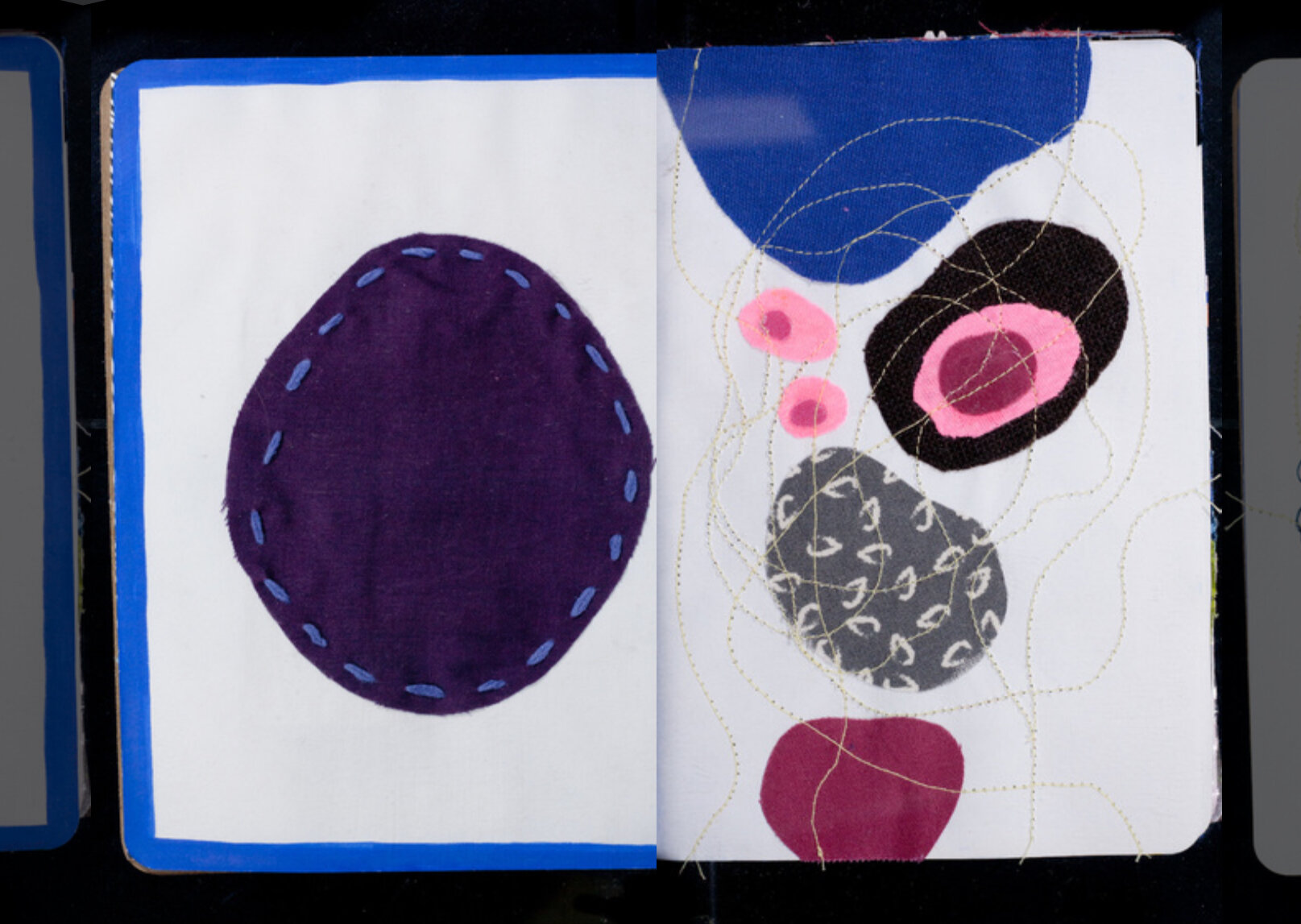
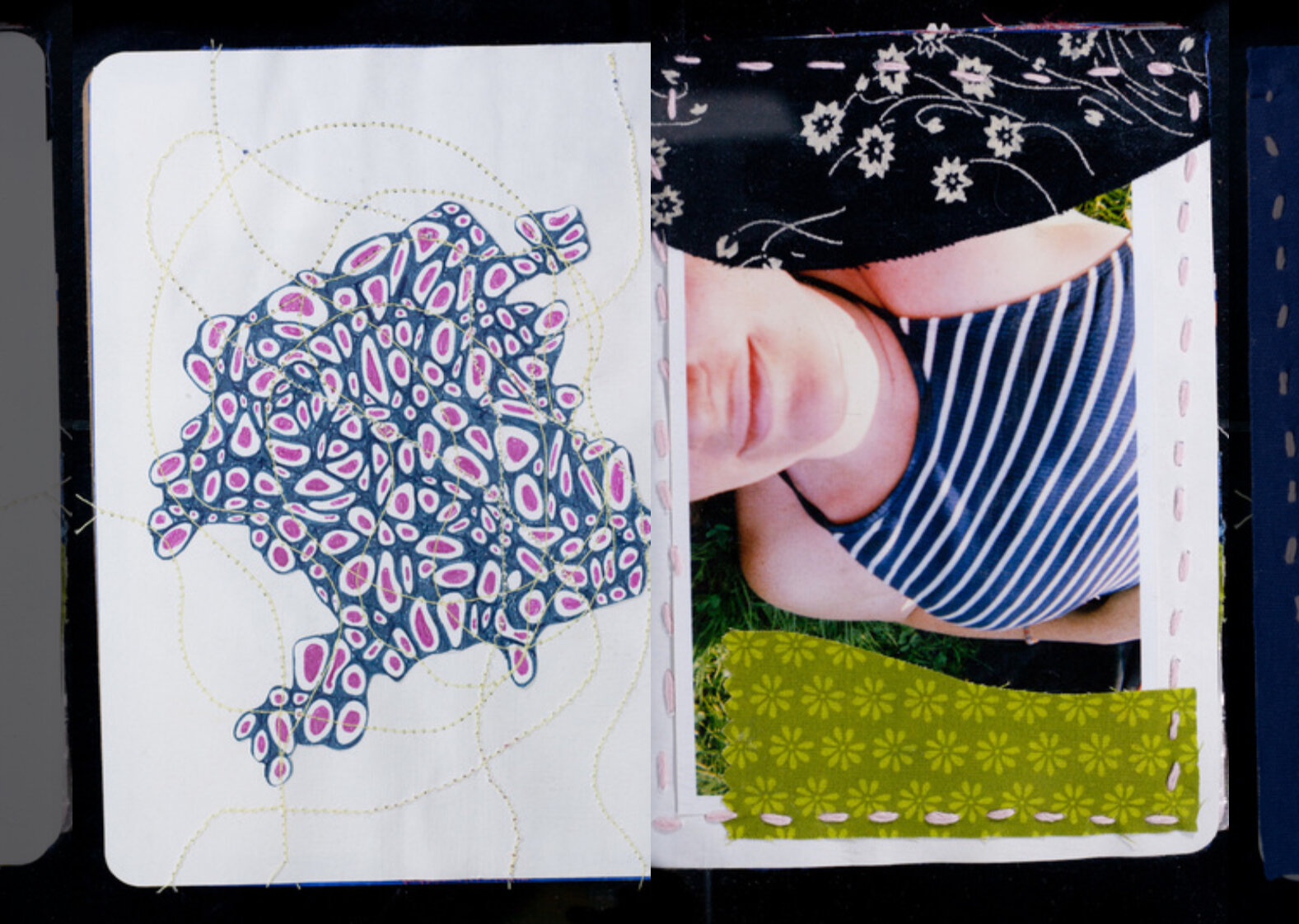
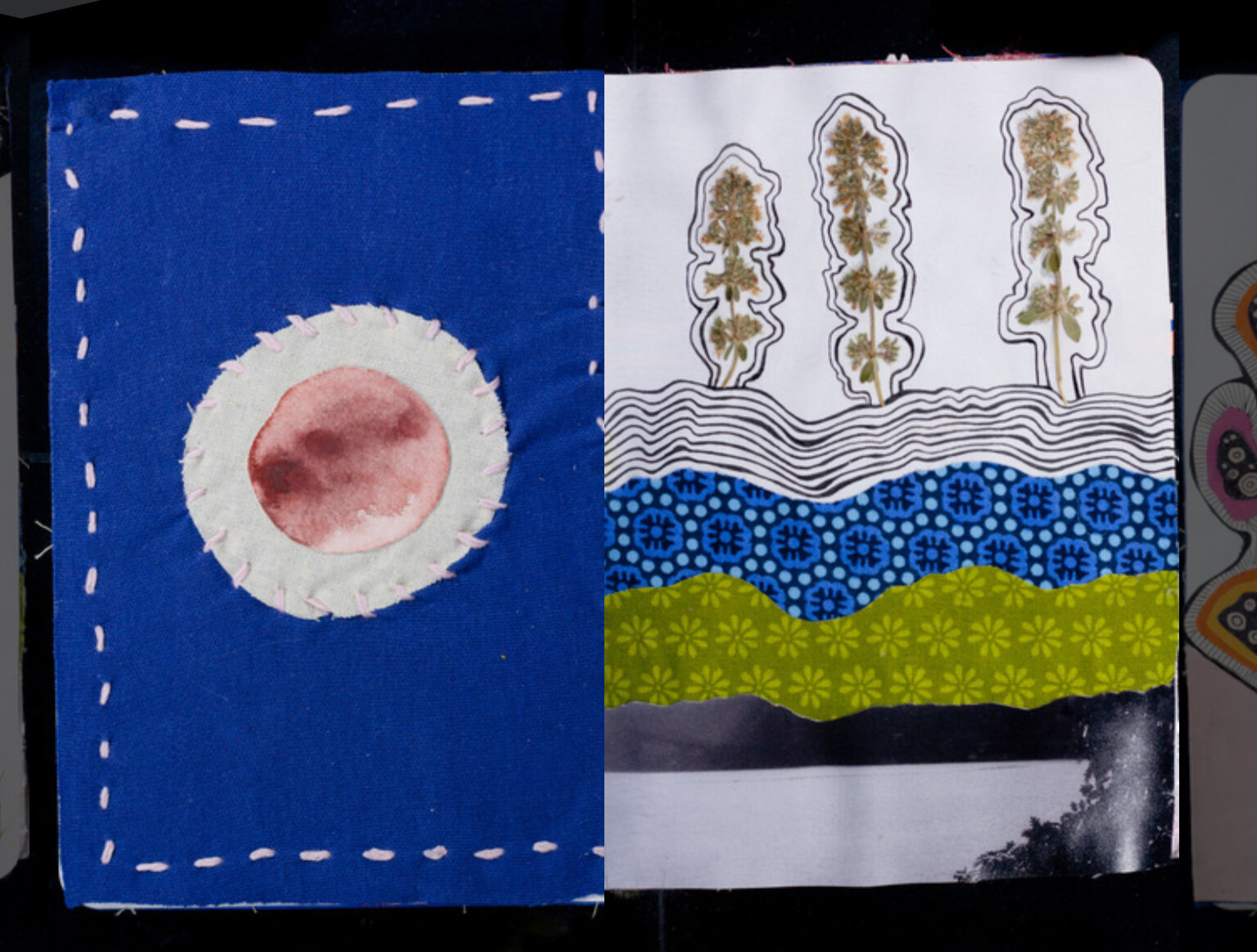
Was any 3D work inspired by that sketchbook?
I definitely used this project to sketch out some compositional ideas. I was thinking a lot about layers, cycles, and transparencies when I filled it out. It is interesting revisiting this project a couple years later, because these ideas have been on my mind recently during this period of quarantine. I suppose that is a cycle in itself!
Do you often “sketch” your sculptures in this way? What is your process for creating your soft sculptures?
In my practice, working on paper is a way to generate visual ideas that will often make their way into my sculptures. I will flip through old sketchbooks if I am looking for inspiration. I will usually draw forms I want to explore before constructing the sculpture, though I keep my plans pretty open. The process of making the sculptures is improvisational, and I want to give myself room to respond to the forms as they emerge.
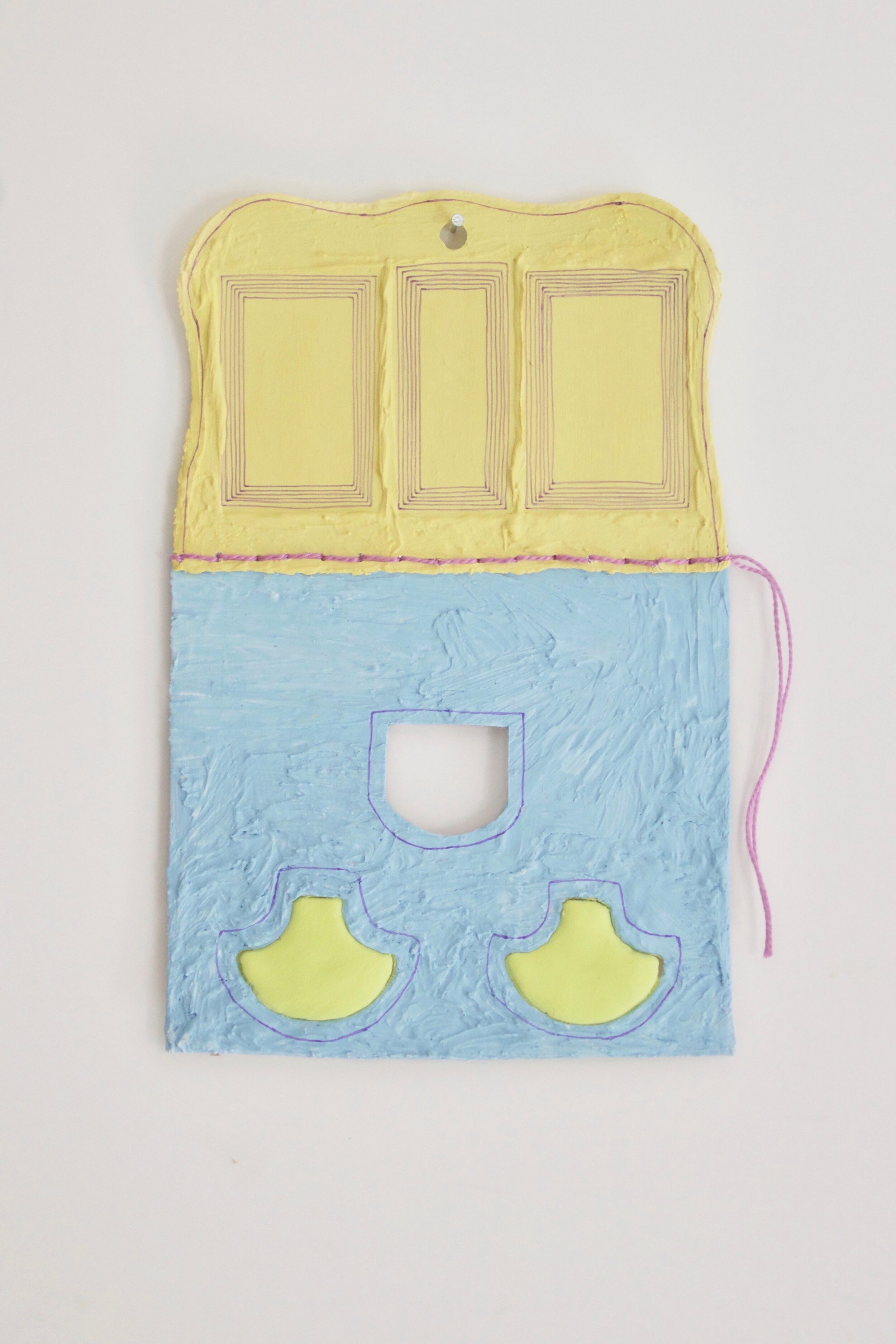

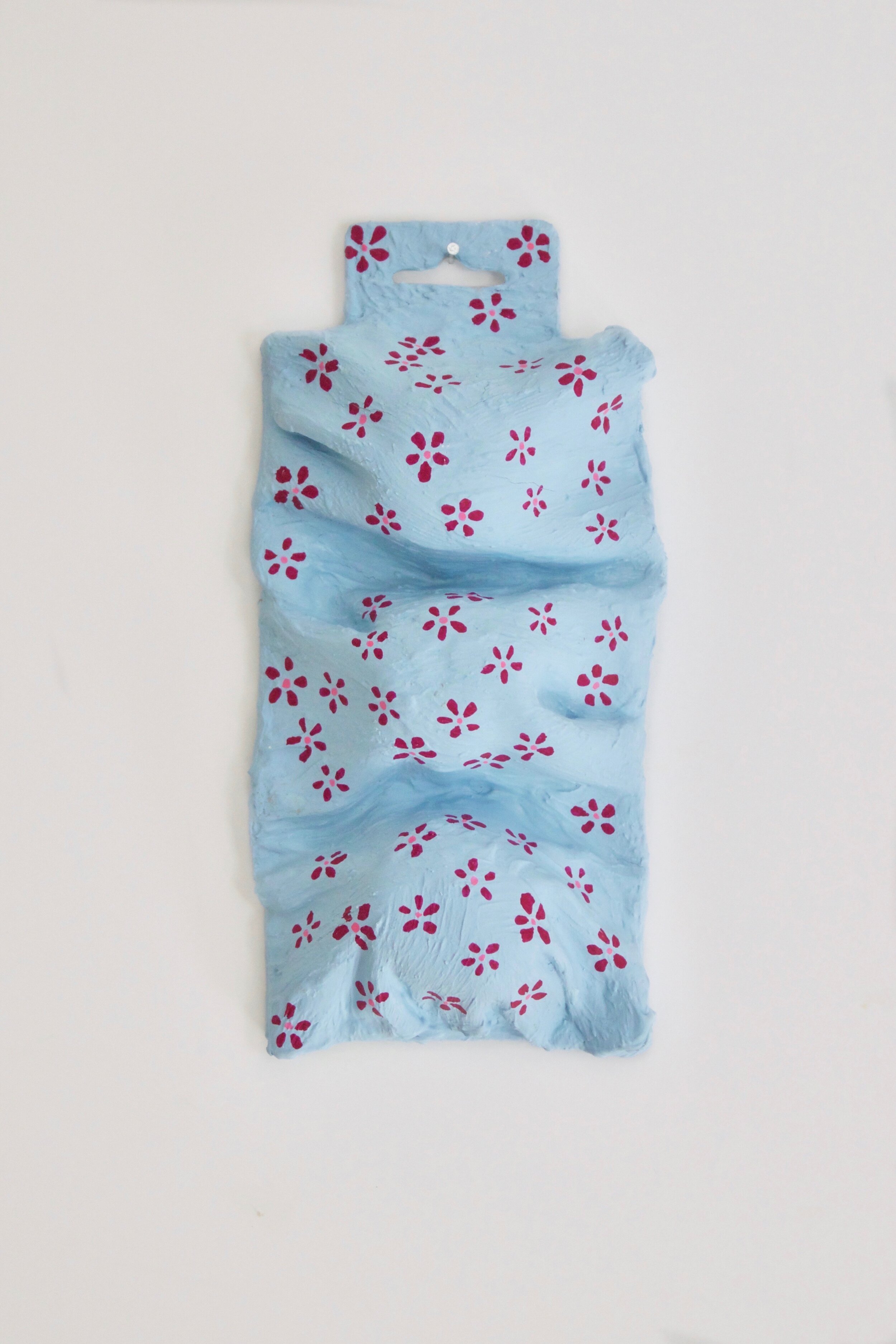
How would you describe your body of work?
I create compound sculptural forms out of clothing and textiles that I source from my own life, or the lives of my friends and family. I build my forms by hand-stitching a mismatched patchwork of patterns, colors, and textures. The sculptures are about the body, the home, material memory, and femininity, and the way these things clash, intersect, and overlap.
What are sources of inspiration for you?
Because I work with recycled clothing and textiles, I think about domestic space and memory. My work has a lot to do with my upbringing in New England, and the kind of colors and patterns that I associate with my childhood. I am interested in giving body to those memories, and lending a lumpiness to that modesty. I sew largely by hand, and the labor of creating these pieces is important. I spend a lot of time with my materials, thinking about their history.
What about textiles relates to the concepts or pushes the formal elements in your work?
All of my memories of textiles relate to the women in my family, and their work in the home. Many of the fabrics and sewing supplies I use in my work belonged to my great-grandmother, who was a great maker and collector of odd things. Her daughter, my grandmother, is a really amazing knitter who made so many memorable sweaters and blankets (and, very sweetly, made sweaters for my Beanie Babies). My mother made my dresses when I was little, and I remember picking out fabrics I liked for her to sew. My work in textiles is so connected to these memories, and these inherited skills play such a large part in my practice. Many of the techniques I use and fabrics I incorporate I received from these women. I know my materials from their previous lives and functions, and this memory and intimacy dictates my visual language.
How do you arrive at the finished shapes of your sculptures? What kinds of forms inspire these shapes?
I usually begin with a certain form in mind, which relates to a specific memory, feeling, space, or body. This part of the process is pretty ambiguous, and very personal, so it can be hard to articulate. Then I construct and manipulate the form, often building around some kind of armature. I sometimes have a hard time knowing when to stop! I will usually work on several pieces at once, because I need some distance before I can move forward. There is a lot of openness in my practice; sometimes I will return to pieces years later and revise them, break them down into parts, or incorporate them into a new work.
Do you feel that your wall sculptures and standing sculptures are extensions of the same ideas/process? Are they different in any way?
I have been thinking a lot recently about how to close the gap between the wall pieces and freestanding works. The ideas and processes for making them are so similar, but they can present very differently, and the process of confronting them in the space is so different. That is something I am trying to interrogate more.
What inspires the playful installation choices in your exhibitions? What experience do you hope these choices create for the viewer?
My forms are very anthropomorphic, and I think of them as having distinct personalities and identities. This is a big factor in how they relate to the space, and to each other. Some confront the viewer with confidence; others are slumped over crouched in the corner. I want to encourage the viewer to reconsider their own body they navigate around and through. I also ask my audience to put some work in, if they want to take in all the visual elements. The works ask the viewer to look up, look down, peer around and through. I think this can present as playfulness, but it is also a way for me to ask people to spend more time with the work, and reconsider their initial responses.
How has the current quarantine situation impacted your studio practice/creativity?
My studio is at home, so I feel lucky that I am able to continue making things in a time of such uncertainty. I am also giving myself space to decide not to be in the studio, depending on how I am feeling. I have felt certain shifts in my work during this period; I have been spending a lot of time in my backyard, and making work that responds to the outdoor space of my home. I find it difficult to define new work that emerges in response to significant life changes, so I am allowing myself to feel my feelings as they are happening. For me, it takes a period of reflection to identify what was going on, and the reason for visual certain shifts.
How can people support your work?
You can find me at www.hannwashburn.com, or on Instagram @hanna.washburn. People can contact me directly if they are interested in purchasing work. If you are able, this is a great time to support artists so they can continue making!
